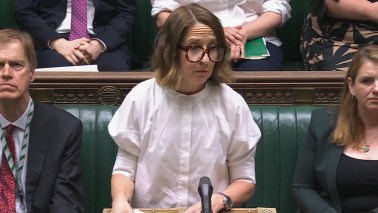We do not need any further lockdown now and it should only be contemplated in the future as a last resort.
The economic case against lockdowns and severe government restrictions is strong. It is based on two key factors, one of which is continuously overlooked in the present debate. Yet, if we are to learn to live with Covid both merit consideration.
The first argument is one that is well understood: the cost of implementing restrictions. As we are seeing now, it hits certain sectors hard – such as hospitality and the creative sector – and has a wider economic impact, denting confidence. There is a significant fiscal cost too and large negative implications for many other aspects of health care, education especially for poor children, mental health and domestic abuse.
The second economic argument, though, is largely ignored. That is how to interpret the policy implications of the models provided by the epidemiologists.
The importance of this was reflected in the recent revelations in the Spectator about the approach to modelling by some of the government’s Sage advisors. This led to the suggestion that the epidemiologists were only factoring in poor outcomes in their modelling, and not a best-case scenario or the implications of no change in policy.
There runs the risk now of pitching some politicians as appearing to be in favour of the science, and others against
It would be like predicting the economic outlook by always expecting a recession, or worse. In which case, the government would be under constant pressure to change policy. Of course, occasionally, the economic modellers may be correct, and a recession would follow. But, over time, if they were to constantly predict such an outcome, their forecasts would be far too gloomy.
While this seems to be the case we are in with the projections made by some epidemiologists it would be unfair to levy criticism more widely.
The analysis of the various variants is generally viewed as excellent. The state of UK modelling on the pandemic is seen as world class, with multiple scenarios, positive as well as pessimistic. In the wake of recent criticism, though, transparency could certainly be improved by seeing the weightings given to the different models.
Notwithstanding this, it is less the models and more how they are used that is the issue.
In our view, for improved policy outcomes the expertise of epidemiologists should be combined with the input of social scientists, including economists. If not, and as we are seeing now, there will be a bias to always err on the side of caution and lock-down and consequently for the government to impose restrictions that may not be necessary.
With so much of the world still unvaccinated new variants are always likely – and with a significant minority in the U.K. unvaccinated pressure on the NHS will persist – a push back against how epidemiologists interpret their models and how these are used to inform government policy is long overdue. This could generate more confidence in the policy route then taken.
Earlier in the pandemic we jointly carried out considerable work on epidemiological models – and at one stage our “traffic light approach” helped inform the policy debate. One of the lessons from the beginning of the pandemic in the spring of 2020 is that behaviour is the key to understanding how the pandemic will evolve.
Looking back, it is now apparent that when lockdown was lifted in the summer of 2020, people reverted to their previous levels of social mixing faster than was desirable. The seeds of the subsequent waves were sown.
In contrast, behaviour when lockdown was lifted this year in June completely confounded the epidemiologists.
People are by no means rational all the time, but they have the capacity to learn from their mistakes. By the summer of 2021, people had learned. Social mixing revived but remained at much lower levels than had obtained prior to the pandemic. They welcomed their new freedoms but did not abuse them.
There runs the risk now of pitching some politicians as appearing to be in favour of the science, and others against. This should not, clearly, be a political issue, but a decision informed by the evidence, with behavioural scientists alongside epidemiologists.
This change would certainly not mean that the forecasts were always correct. But by cementing the concept of behavioural change into the whole process, on average they would be more accurate.
This is not about an argument on economics versus health. It is about factoring in how people behave. It would also give the government and parliament clear breathing space to not be pushed into always locking down.
It is also central to the future approach – about the need to live with the pandemic, and its future evolution, in a way in which both society and the economy are protected.







Comments